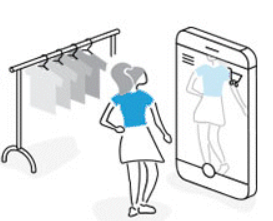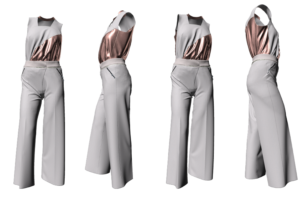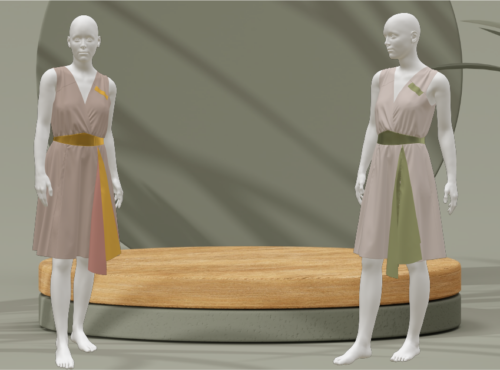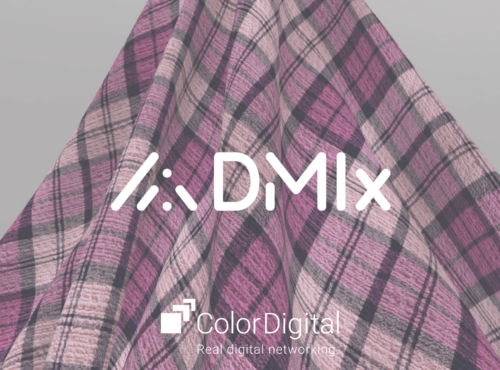 The job of a technical-functional consultant explained by Stéphane
The job of a technical-functional consultant explained by Stéphane
Virtual Design: 3D in all these states!

The ecological emergency, change in shopping behaviour, competitive intensity and the pandemic situation make innovation more than necessary. Although 3D technology has demonstrated its power to respond to many challenges: ecological, economic, marketing, its use is struggling to become more widespread in the Fashion & Luxury sector.
Why modelling and virtual design become vital in the market? What are the advantages of deploying these technologies within the product development process? What are the barriers to standardize this technology? How does virtual design and modelling serve the challenges of the company?
Through this article, we would like to explore some avenues of reflection.
3D, at the service of the entire product life cycle
Commonly, 3D technology is equated with virtual animation (such as runways) and the production of marketing and communication visuals (product representation for advertising, for example). Yet its use goes far beyond and serves more stakes: productivity improvement, costs control by reducing quality problems and default, exploring more design alternatives, accelerate product development, and reduce time-to-market… So many examples of the benefits of using 3D.
How does 3D modelling technology make it possible to optimize product development?
The 3D asset finds its legitimacy at every stage of product design and development:

1 – Design: The fashion designer is responsible for defining the collection trends, sketching styles, finding inspirations (colours, prints, materials…), all in a limited time. The visualization of 2D sketches in 3D releases their creativity. In a few clicks, the sketch comes to life allowing you to play with materials, volumes, colors… This modelling of the sketches induces a great visual stimulation and thus accelerates the creative process.

 2 – Development: Creating prototypes has never been faster. Virtual prototyping generates no material orders, zero production times and no delivery time. The realization is done on-site from the 3D software, saving time, money and a reduction of the carbon footprint emitted by the company.
2 – Development: Creating prototypes has never been faster. Virtual prototyping generates no material orders, zero production times and no delivery time. The realization is done on-site from the 3D software, saving time, money and a reduction of the carbon footprint emitted by the company.
Subsequently, this same virtual prototype is distributed internally or externally to present and approve the final collection: Turntable, digital showroom, virtual show, virtual fitting, etc…
All the modifications (colour, material, style…) are made in real-time making it possible to visualize the final design. The technology accelerates decision-making and new savings (costs of buying sessions, production of new prototypes, etc.).

3 – Production: Once the salesman (physical or virtual, depending on the company’s digital commitment) has been validated, the order is placed with the production entity. The use of virtual models avoids problems of fitting and contributes to a good understanding of needs with external third parties (reduction of assembly problems/look).

4 – Publication: Simultaneously or just before the production stage, the 3D model is reusable for other uses: virtual show to present the collection to customers, online use for advertising and pre-orders, virtual fitting for customers, etc.
Numerous saving are made. Furthermore, publishing your product online right before production facilitates quantity adjustment to be produced and then lower the stock of unsold goods.

5 – Sales and e-commerce: The visuals created in 3D are reusable on e-commerce sites to allow customers to view the product in retail (without the need to make a photoshoot). Product customizations are made possible online and some companies offer virtual fitting on an avatar in our image. The requirements are met.
To sum up, the use of 3D has many advantages, and the technology today makes it possible to realistically represent the product so well that we manage to imagine the product and to see its defaults by transposing it on virtual mannequins.
3D can be used to materialize more accurate stylist thinking, thus avoiding stylist drawing errors or patternmaker misinterpretation of the sketch.
What are the brakes on using 3D?

Silhouette created on CLO 3D
Adapting your product to the brand’s size standards, realistically representing the proportions/volumes, playing with materials and colours, and handling the product from all these angles has never been easier. And yet the sector is far from having democratized the use of 3D. Why? What are the obstacles to going towards this type of technology?
Some sectors, such as sportswear, are more likely to turn to new technologies. They were pioneers in the use of 3D.
So, the brake on the use of technology would be mainly cultural? Indeed, the fashion sector has long focused its innovation on the product, rather than the digital part. This love of the product, of the material and this commitment to know-how and touch can lead to reluctance to change: Digital is not necessarily perceived for its advantages but first for time and learning constraints.
Moving from pencil to screen to create seems to be an aberration at first glance. This requires getting out of your comfort zone, relearning your job, and losing productivity at first… It takes time to adapt, which is quickly forgotten when you are faced with the possibilities that the tools can offer.

Finally, the financial effort required to implement 3D is the last identified barrier. The price of licenses, hardware, user training, the loss of productivity associated with learning a new process, are the main obstacles identified by investors.
Has the fashion sector already lagged far behind other sectors? How should we go about it to recover this backlog accumulated over the years? Should we start in 3D?
Although 3D shows us all its interest and power, it is often limited to its recreational aspect for artistic teams. Yet the transition to 3D is a strategic choice for the company to accelerate the time-to-market, go towards a CSR approach or optimize its development processes to achieve savings.
Thanks to Alexandra BUOR and Jennifer FERRET for their contributions.



